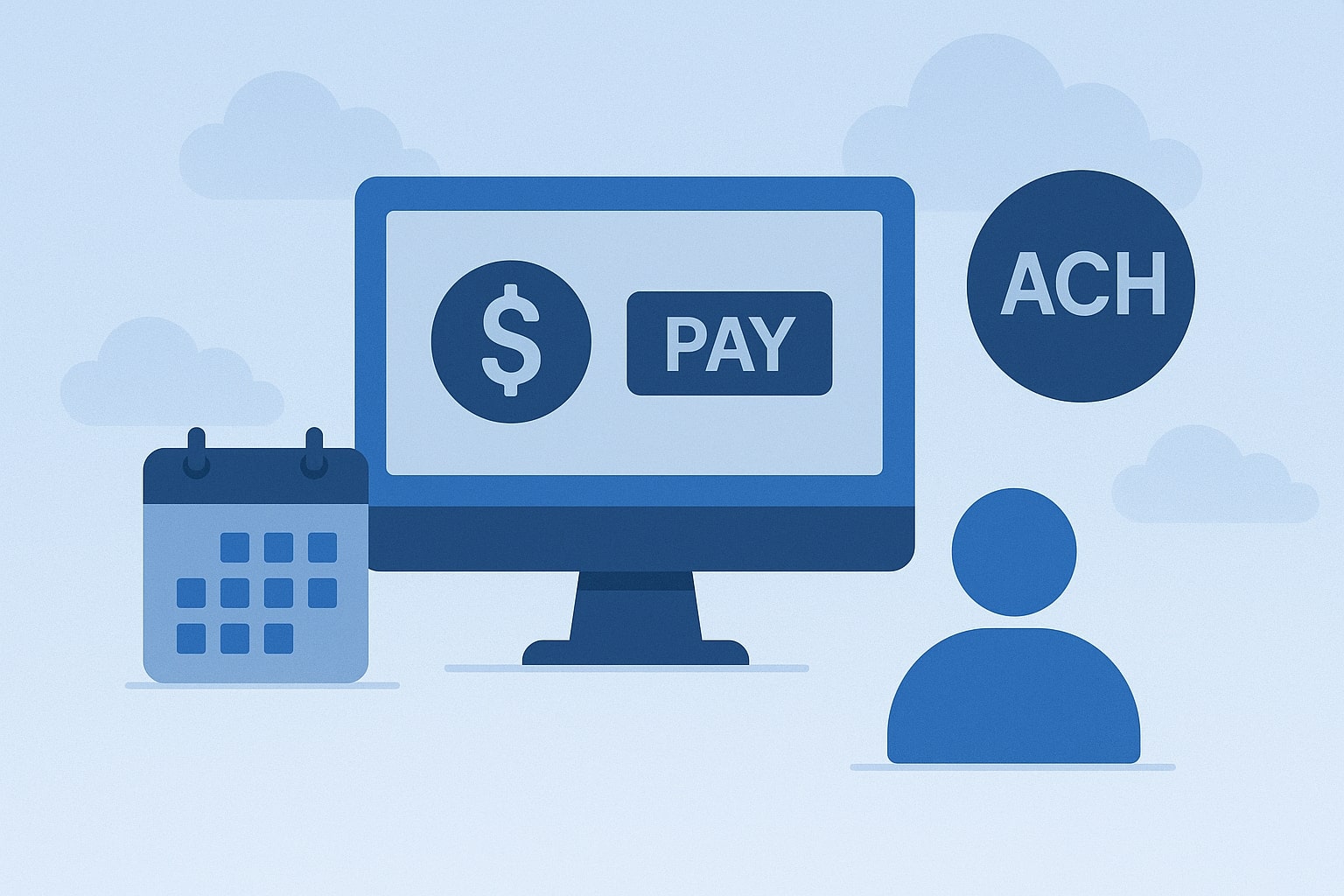
By achforbusiness October 21, 2025
Running a subscription program in the U.S. is all about reliable, low-cost, repeatable billing. ACH payments for subscription-based businesses deliver exactly that: bank-to-bank transfers with lower fees than cards, strong authorization workflows, and fewer surprises.
This in-depth, plain-English guide explains how ACH works for recurring billing, how to stay compliant, what to watch out for, and how to optimize conversions and cash flow. You’ll get practical checklists, implementation tips, and FAQ answers tailored to U.S. merchants.
Why ACH Payments Are a Game-Changer for Subscription-Based Businesses
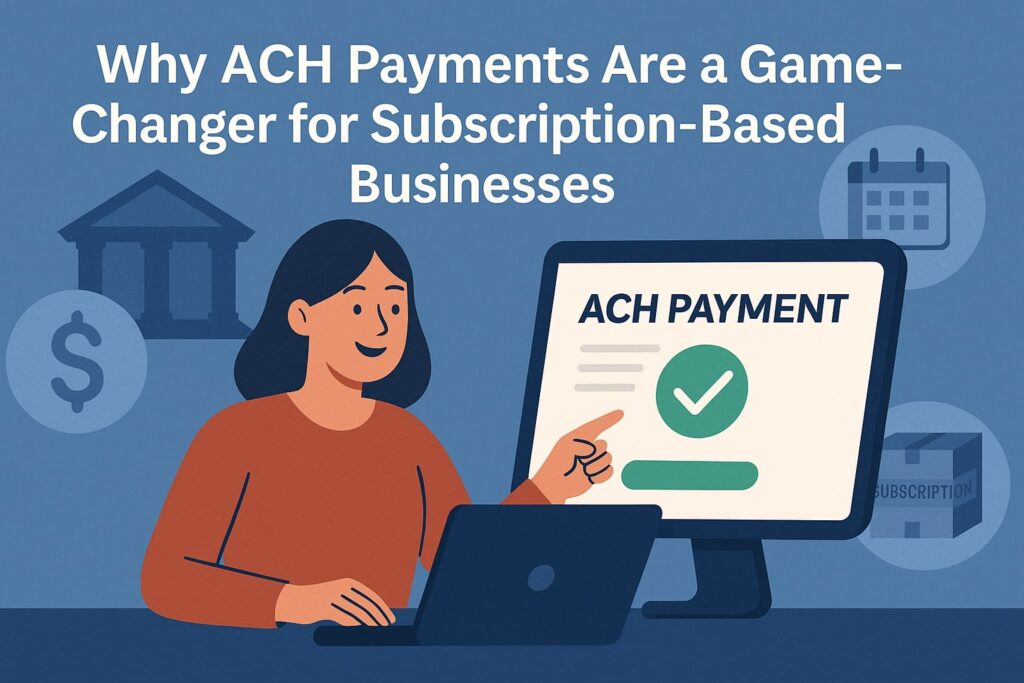
When you sell memberships, SaaS, subscription boxes, or retained services, your revenue depends on frictionless renewal. ACH payments for subscription-based businesses reduce churn by removing card-related failure points like expired plastics, reissued numbers, or credit limits.
ACH moves money directly between U.S. bank accounts using the Automated Clearing House network. That network is purpose-built for recurring credit and debit transactions and is used by payroll direct deposit, bill pay, and subscription debits.
The economics matter. Cards typically cost a blended 2%–3% plus per-transaction fees, and rewards cards can be higher. ACH is usually priced as a small flat fee per transaction or a much smaller percentage with a cap.
Over thousands of renewals, the difference compounds. Lower cost per renewal improves lifetime value (LTV), supports aggressive trial pricing, and opens room for better retention incentives.
Reliability is another win. ACH payments for subscription-based businesses often see higher uninterrupted continuity because bank account numbers don’t “expire,” and customers are less likely to change their routing and account than a card.
Fewer involuntary churn events keep cohorts healthy. Combined with strong authorization and notifications, ACH can also reduce chargebacks because disputes flow through return codes and formal processes that encourage resolution.
Finally, customer experience improves. You can present ACH as “Pay by bank,” “Bank transfer,” or “Checking account” for recurring payments. For many U.S. customers—especially B2B buyers—this feels normal and trustworthy.
Paired with instant bank account verification, the sign-up step is fast, secure, and low-friction, which boosts first-payment success and sets your subscription up for long-term renewal success.
How ACH Works for Recurring Billing
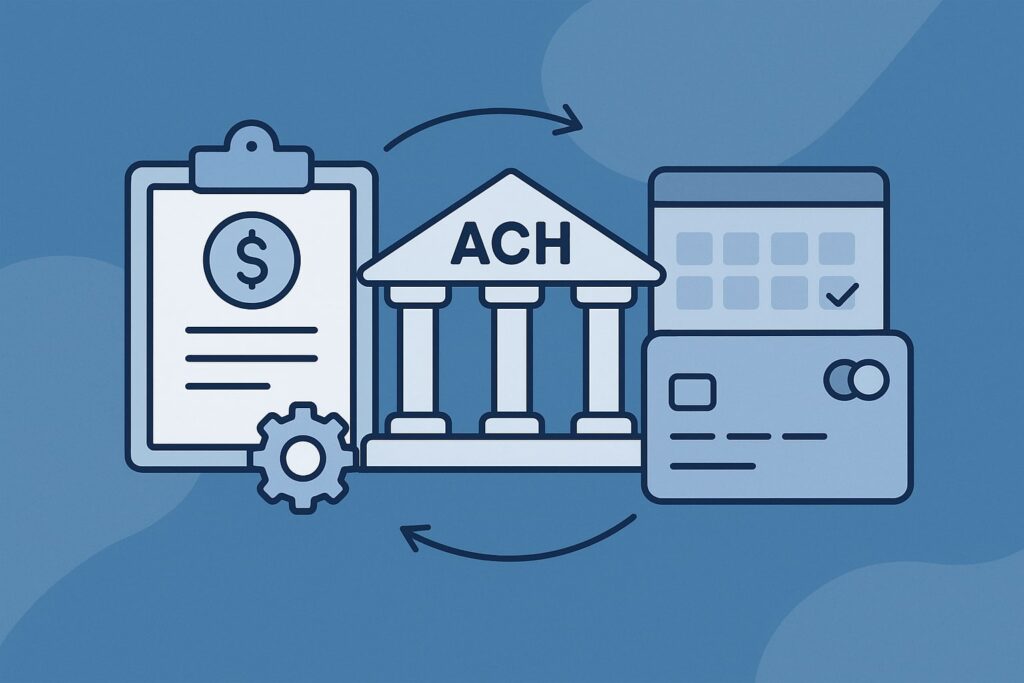
ACH payments for subscription-based businesses move funds via two flows: ACH credit (your customer’s bank pushes money to you) and ACH debit (you pull funds with the customer’s authorization).
Most subscriptions use ACH debits because they automate renewals on your schedule. You collect authorization, submit a debit entry through your processor (ODFI), the customer’s bank (RDFI) receives it, and funds settle to your account after clearing.
Timing matters. Standard ACH batches settle on business days. Debits typically fund in 1–3 business days depending on your processor’s risk settings.
Same Day ACH can accelerate availability, but you’ll still consider cut-off times and weekends. Build your renewal logic with buffers so ledger balances, access entitlements, and dunning rhythms align with real settlement.
Returns are the ACH version of chargebacks, but they’re more structured. If the customer has insufficient funds, you may get an R01 return. If the account is closed, you’ll see R02. If no authorization exists, an R10 may arrive. Each code guides your next step—retry, request a new account, or provide proof of authorization.
With ACH payments for subscription-based businesses, returns usually appear within two banking days for many reasons, but some unauthorized disputes can appear longer. Plan operationally for monitoring, messaging, and retries.
Recurring billing requires a tokenized mandate. You store a secure reference to the customer’s bank account and keep their signed or logged authorization on file.
Each cycle, your billing engine calculates amounts, creates the ACH debit file via your gateway/processor, posts entries to your accounting system, and reconciles payouts. The beauty of ACH is scale: once the rails are in place, adding subscribers is nearly zero marginal effort, and your cost efficiency grows with volume.
Authorization & Compliance Essentials (What You Must Get Right)
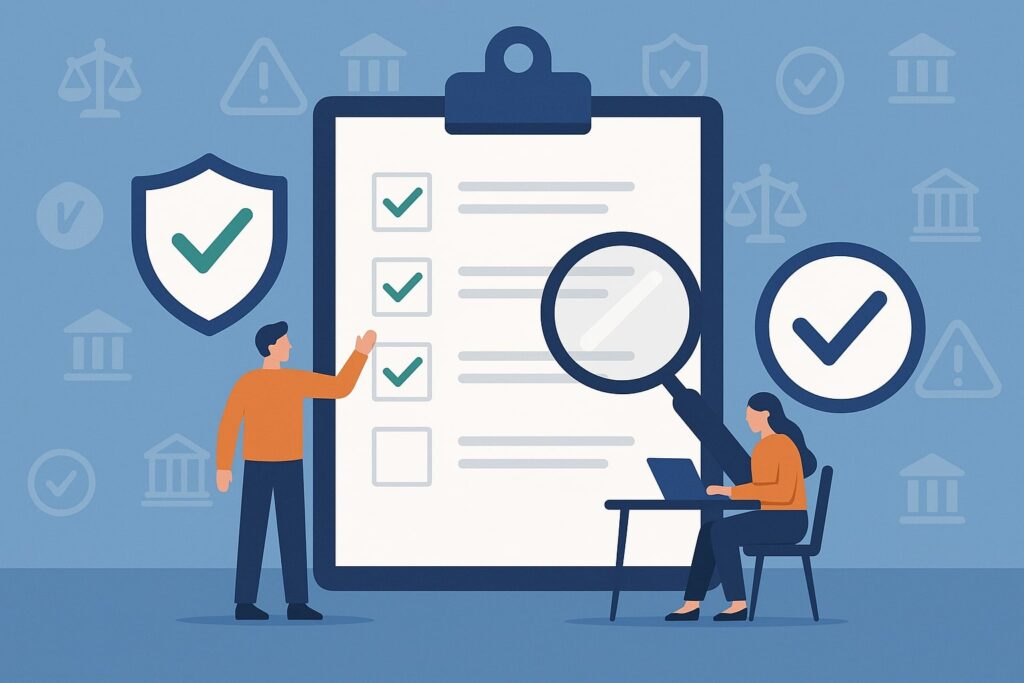
Compliance starts with clear authorization. For ACH payments for subscription-based businesses, you need a legally valid mandate that discloses the debit timing (e.g., monthly), amount (fixed or variable), how the customer can cancel, and your contact information.
If the amount varies—like usage-based SaaS—you must state how the amount is determined and when the customer will be notified before the debit. Collect and store the customer’s consent via e-signature, checkbox with IP/time stamp, or written authorization if you’re onboarding offline.
Keep your authorization records. Maintain durable logs that include the customer’s name, account/routing numbers (tokenized or adequately protected), the authorization text, consent time/date, and any notice details for variable debits.
If a dispute occurs, your ability to produce this record quickly is critical. Build internal SOPs for retention, secure storage, and access controls so you can retrieve proof within hours, not days.
Disclosures and notifications are an important best practice. For ACH payments for subscription-based businesses, send a pre-debit notice for variable amounts or schedule changes. Include the amount (or formula), debit date, customer support line, and easy cancellation instructions.
Clear notices reduce surprises and complaints and strengthen your defense if a return claims lack of authorization. For fixed subscriptions, periodic reminders or renewal receipts help manage expectations and reduce unnecessary disputes.
Security and privacy matter. Protect bank data using encryption at rest and in transit. Limit access on a least-privilege basis. If you use a gateway or processor that tokenizes bank details, you reduce your data footprint and risk.
Train support teams on redaction, identity verification, and safe handling. Document breach response steps. Customers trust ACH payments for subscription-based businesses when the process is transparent, permissioned, and demonstrably secure.
Choosing an ACH Processor or Gateway (Features to Prioritize)
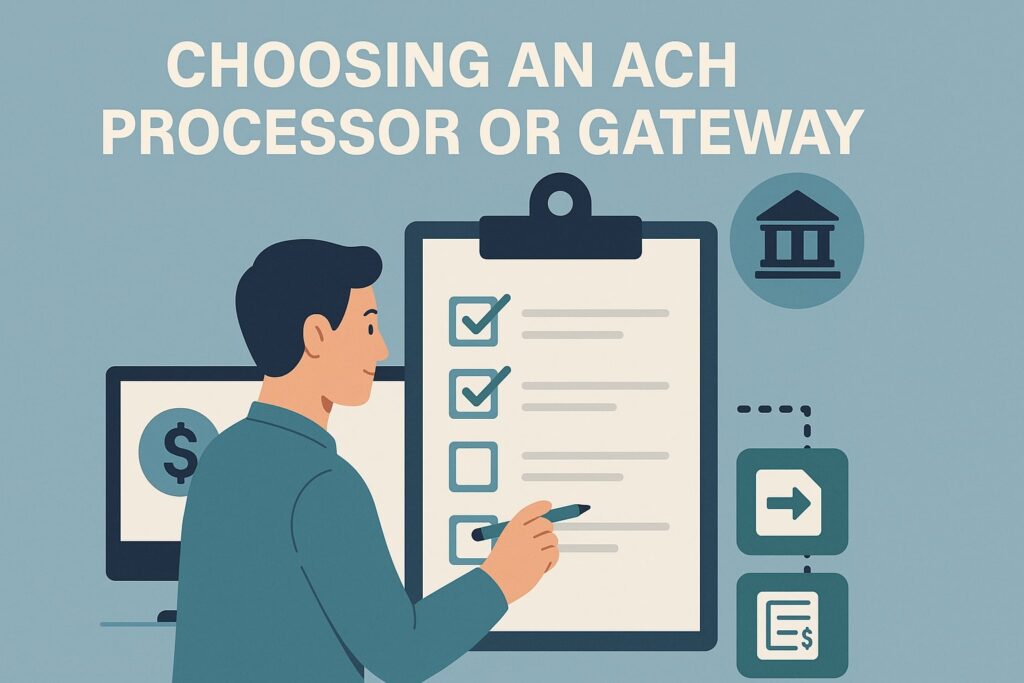
The processor you choose shapes your economics and operations. Look for flat, transparent pricing and a clear return fee policy. Ask about caps on percentage pricing and any monthly minimums.
For ACH payments for subscription-based businesses, prioritize real-time bank verification, micro-deposit fallback, and support for Same Day ACH when needed. Strong verification reduces NSF risk and bad-account entries, which lowers returns and operational overhead.
Product features should match your billing model. Ensure your provider supports recurring schedules, variable amount debits, proration, and trial handling. Ask about built-in dunning workflows, automated retry logic, and intelligent routing that avoids weekends or holidays.
Seek robust webhooks so your app updates customers immediately on success, failure, or return codes. Webhooks let you pause service, extend grace periods, or prompt for updates without manual intervention.
Risk tools are essential. A good ACH partner offers velocity checks, balance checks where permissible, blocklists, and real-time decisioning on first debits.
You want configurable rules: minimum days between retries, maximum total retry attempts, and thresholds for Same Day ACH eligibility. Because ACH payments for subscription-based businesses depend on predictable renewals, these controls stabilize cash flow and reduce involuntary churn.
Finally, make sure reconciliation is painless. Request consolidated payout reports, line-item settlement data, and easy exports to your accounting system. Ask for sandbox environments and developer docs that fit your stack.
Evaluate support quality: dedicated onboarding, response SLAs, and clear escalation paths. The right partner reduces complexity and lets your team focus on growth rather than payment fires.
Verifying Bank Accounts: Instant Auth, Micro-Deposits, and Best Practices
Friction at sign-up kills conversions, so invest in modern bank verification. Instant bank account authentication uses secure APIs that let customers log in to their bank and return verified routing/account details—fast and accurate.
For ACH payments for subscription-based businesses, instant auth drastically reduces key-entry errors and failed debits on first renewal. Many providers also confirm account ownership and account type (consumer vs. business), which sharpens your risk profile.
Micro-deposits are the classic fallback. You send two tiny deposits and ask the customer to confirm the amounts. It’s slower—often 1–2 business days—but useful for users who prefer not to log in via instant auth.
To keep momentum, allow customers to start trials immediately while verification completes. Send clear instructions, SMS/email reminders, and a one-click path back to the verification screen. The goal is to prevent verification drop-off.
Add guardrails. With ACH payments for subscription-based businesses, validate account/routing formats, block obviously invalid combinations, and run duplicate checks to catch recycled or risky accounts.
If your provider offers balance checks or account status signals (where permitted), apply them before high-ticket debits. For business subscriptions, obtain company name, EIN, and contact details to tie the bank account to the legal entity. Combining instant auth with thoughtful UX yields high first-payment success and healthier renewal cohorts.
Pricing, Settlement, and Cash-Flow Planning (So You Don’t Get Surprised)
ACH costs are typically a fraction of card fees. You might pay a small flat fee per debit, a capped percentage, or a blended model, plus nominal fees for returns. Model the savings across your entire base: subscription price, renewal cadence, and expected tenure.
Even a $0.20–$0.40 savings per renewal can translate to major margin gains over time. For ACH payments for subscription-based businesses, these gains help fund better onboarding, more generous trials, or stronger support.
Settlement timing shapes cash management. Standard ACH may fund in 1–3 business days after submission; Same Day ACH accelerates, but you’ll still deal with cut-offs and weekend gaps.
Align your renewal cycle and access windows with settlement. If you grant access immediately upon debit submission, set aside a reserve for potential returns. If you gate access on funding, communicate that clearly to customers. Transparency avoids billing frustration and support tickets.
Build a dunning and retry plan that’s ACH-aware. For NSF returns, wait at least one business day before retrying, then schedule a second attempt aligned with common pay cycles (e.g., Fridays or the 1st/15th). Cap retries to avoid customer frustration.
Use empathetic messages: explain the issue, provide a quick “update bank account” link, and offer a short grace period. With ACH payments for subscription-based businesses, smart retries and respectful communication can recover a large share of failed renewals without harming relationships.
Preventing Returns & Disputes (Operational Playbook)
Returns happen, but you can minimize them. Start with clean authorization language and visible cancellation paths. Confirm the customer’s email and phone at sign-up and send a welcome message that reiterates the plan, amount, and renewal cadence.
Before the first debit, consider a friendly reminder—especially for variable charges. Clarity reduces R10-style “no authorization” disputes and builds trust in ACH payments for subscription-based businesses.
Use data to target risk. Flag customers with repeated NSF events and prompt for a different payment method or require prepayment before shipping any physical goods. Segment high-ticket renewals for pre-debit notices. Monitor return codes weekly, identify patterns by plan, channel, or region, and fix root causes.
For example, if R03 “No Account/Unable to Locate” spikes, your data capture or verification may be faulty. If R01 “Insufficient Funds” climbs after price changes, revisit timing or offer split payments.
Train support. Provide a concise return-code cheat sheet and step-by-step resolutions. Empower agents to resend authorization copies and explain how to cancel or update details. Keep hold times low during renewal weeks.
Support quality is a retention lever: courteous, informed help reduces escalations, negative reviews, and regulator complaints. Done right, it turns a potential churn moment into a save and reinforces confidence in ACH payments for subscription-based businesses.
UX & Conversion Optimizations for “Pay by Bank”
Small design changes drive big revenue. Put “Bank transfer (ACH)” alongside cards during checkout with a brief benefit note like “secure, no card fees, easy for recurring billing.” Use logos customers recognize (major bank icons) to increase trust.
With ACH payments for subscription-based businesses, move bank verification earlier in the flow for trials that convert quickly, or later for high-intent users if you want less friction upfront.
Keep forms short. If you must collect routing/account numbers manually, show smart hints, mask sensitive fields, and provide tooltips and micro-copy that explain where to find numbers on a check.
Offer instant auth as the primary path with micro-deposits as a clear alternative. Provide real-time validation and accessible error states. Avoid dead ends—every error should present a helpful next step.
Communicate ownership and control. Remind users they can cancel anytime, and that each renewal triggers a receipt or notification. Provide a billing portal where they can update bank info, change plans, or pause service.
ACH payments for subscription-based businesses thrive when customers feel informed and respected. The clearer your billing experience, the higher your conversion and the lower your support load.
Accounting, Reconciliation, and Reporting (Close the Loop)
Your finance team needs clean data. Ensure your processor exposes event-level webhooks: debit submitted, funded, returned, corrected. Ingest those events into your billing system and general ledger.
Reconcile payouts by deposit date and include trace numbers or IDs to match entries. For ACH payments for subscription-based businesses, create daily reconciliation routines and monthly variance checks so revenue recognition aligns with settlement, not just invoice creation.
Categorize returns and write off policies. NSF returns that you won’t retry should flow to a dedicated ledger account and trigger dunning or plan changes. Unauthorized returns that you contest should carry attached authorization artifacts.
For variable billing, store the usage calculation and the notification log so auditors can validate pricing. Good hygiene here prevents end-of-quarter scrambles and reduces audit friction.
Reporting should be subscription-aware. Track ACH adoption rate, first-payment success, return rate by code, recovery rate after dunning, and lifetime value for ACH vs. card cohorts.
Watch the lag between renewal date and funding date, and quantify its working-capital impact. ACH payments for subscription-based businesses often outperform on net margin; prove it with dashboards that your leadership and investors can trust.
ACH for B2B vs. B2C Subscriptions (Key Differences)
B2B subscriptions—software seats, service retainers, data feeds—are a natural fit for ACH. Many companies prefer paying from operating accounts, and ACH sidesteps card limits and corporate card policy hurdles.
For ACH payments for subscription-based businesses selling B2B, support purchase orders, invoice-based reminders, and bank verification that recognizes business accounts. Offer net terms where appropriate and align debits with client cash cycles to reduce NSF risk.
B2C subscriptions—streaming, meal kits, consumer SaaS—benefit from instant sign-ups and effortless renewals. Emphasize instant bank login, clear authorization, and mobile-first UX.
Consider incentives like small discounts for “Pay by bank,” which can shift a meaningful share of customers to ACH and lower your blended processing costs. With consumer audiences, educational micro-copy helps: explain ACH as a secure bank transfer used by payroll and bill pay.
Support needs differ. B2B requires invoice PDFs, tax calculation, W-9/W-8 management, and multi-seat proration. B2C centers on passwordless portals, SMS reminders, and flexible pause options.
Yet the fundamentals of ACH payments for subscription-based businesses apply to both: solid authorization, transparent communications, verified bank details, and data-driven dunning.
Advanced Topics: Same Day ACH, Variable Billing, and Usage-Based Pricing
Same Day ACH can tighten cash cycles and speed entitlement. If you ship goods right after billing or grant premium access immediately, faster funding reduces risk. Review your provider’s cut-off times and fees before enabling.
For ACH payments for subscription-based businesses, reserve Same Day ACH for high-value renewals or first-time payments where speed matters most and risk scoring is favorable.
Variable and usage-based billing add complexity. Build a pre-debit notice that summarizes the billing period, usage metrics, and resulting amount, delivered at least a few days before the debit date.
Provide a customer dashboard showing meter data in near-real-time. Transparency reduces disputes and fosters trust. When you generate the debit, attach metadata so support can quickly tie a bank return to the usage details and the customer’s plan.
Handle partial failures gracefully. If a usage-based debit returns NSF, consider auto-downgrading features while keeping the account active for a short grace period. Offer one-click payment method updates or a split payment option.
With ACH payments for subscription-based businesses, flexible fallback strategies preserve relationships and recover revenue without heavy-handed collections.
Migration Strategy: Moving Existing Subscribers from Cards to ACH
A thoughtful migration can reduce processing costs overnight. Start by identifying segments most likely to switch: long-tenured users, high-ARPU customers, and accounts with frequent card failures.
Create a value-forward campaign—“Save $X per year,” “Avoid card expirations,” or “Preferred billing for members”—and pair it with a frictionless bank-add flow. In ACH payments for subscription-based businesses, even a modest adoption rate materially reduces fees.
Design the path. Inside your billing portal, add “Pay by bank” as a highlighted option. Use instant auth to minimize steps. Offer a small, time-boxed credit or loyalty perk for switching.
Send a follow-up email sequence to non-responders and train support to suggest ACH when helping with card declines. Make the change reversible to relieve anxiety.
Measure and tune. Track conversion to ACH, subsequent return rates vs. card declines, and churn deltas. Watch support volume during the campaign and refine messaging.
Over time, bake ACH payments for subscription-based businesses into onboarding so new customers default to bank payment from day one, while maintaining the card as a backup method for customers who insist on it.
Legal, Risk, and Customer Support Scenarios (Real-World Playbook)
Edge cases happen. A customer claims they never authorized the debit. Your support team should retrieve the authorization record, send it with a friendly explanation, and offer cancellation or plan changes if appropriate.
If the bank files an unauthorized return, decide whether to re-debit after re-authorization or accept the reversal. With ACH payments for subscription-based businesses, quick, respectful handling prevents escalation and preserves your reputation.
If you deliver physical goods on renewal, consider holding shipment until funding or using Same Day ACH for that cohort. For digital services, design graduated access: limited features pending funding, full access after settlement.
If an account generates repeated NSF events, require prepayment or a card on file as a backup. Communicate policies plainly in your terms and during onboarding.
Keep a living runbook. Document common return codes, standard email/SMS templates, refund policies, and escalation paths. Host this internally and review quarterly. Train new hires with real transcripts and annotated examples.
The repeatability of ACH payments for subscription-based businesses makes it ideal for codified playbooks that drive consistent, fair resolutions at scale.
Implementation Checklist (From Kickoff to First Successful Renewal)
- Select a processor that supports instant auth, micro-deposit fallback, recurring debits, and webhooks.
- Draft clear authorization language covering schedule, amounts, variable billing rules, and cancellation.
- Build checkout UI with “Pay by bank (ACH)” alongside cards; prioritize instant auth.
- Implement tokenization, secure storage, and internal access controls for bank data.
- Configure dunning: retry timing, limits, and messaging for NSF and other return codes.
- Connect webhooks to your app and ledger; test reconciliation with sandbox events.
- Prepare pre-debit notices for variable billing and renewal receipts for all plans.
- Train support on return codes, proof-of-authorization retrieval, and cancellation flows.
- Pilot with a small cohort; measure success, returns, and support volume.
- Roll out widely and launch an ACH-migration campaign for existing subscribers.
This sequence operationalizes ACH payments for subscription-based businesses with minimal surprises and maximum confidence—increasing renewal stability while lowering costs.
FAQs
Q1: Are ACH payments safe for recurring subscriptions?
Answer: Yes. ACH runs on established U.S. bank rails used by payroll and bill pay. Safety comes from strong customer authorization, secure data handling, and transparent notifications.
Use instant bank auth and store mandates. With these steps, ACH payments for subscription-based businesses are both safe and reliable.
Q2: How long does ACH settlement take?
Answer: Standard funding is commonly 1–3 business days after submission, depending on your provider and risk settings. Same Day ACH speeds this up but still respects cut-off times and non-banking days. Build your renewal logic and access policies around these windows so customers aren’t surprised.
Q3: What fees should I expect?
Answer: ACH is typically much cheaper than cards: often a small per-transaction fee or a low percentage with a cap, plus nominal return fees. Your exact pricing depends on volume, risk profile, and features like Same Day ACH.
Q4: What happens if a debit fails?
Answer: You’ll receive a return code explaining why—NSF, no account, unauthorized, etc. Use intelligent retries for NSF, request updated details for account issues, and provide authorization proof for disputes. Clear communication and respectful dunning recover many payments without damaging relationships.
Q5: Can I use ACH for variable or usage-based billing?
Answer: Absolutely. Include transparent pre-debit notices that explain the calculation and timing. Provide dashboards showing usage. Variable-amount ACH payments for subscription-based businesses work well when customers understand the logic and have time to review before the debit.
Q6: Is ACH better for B2B or B2C?
Answer: Both benefit. B2B buyers often prefer bank payments for higher-value subscriptions and clean reconciliation. B2C buyers enjoy “no card required” convenience and fewer expirations. Offer ACH prominently and let customers choose what fits.
Q7: Do I need customer consent for every renewal?
Answer: For recurring plans, you need an ongoing authorization (mandate) that clearly states the schedule and amount/logic. You don’t collect new consent every cycle, but you should send receipts and any required pre-debit notices for variable amounts. Keep the original authorization on file and accessible.
Q8: How do I encourage existing card customers to switch to ACH?
Answer: Promote benefits in-app and via email. Offer a small incentive, make bank linking fast with instant auth, and ensure it’s reversible. Track adoption and returns. Over time, ACH payments for subscription-based businesses will lower your blended cost while keeping renewal rates strong.
Conclusion
For U.S. subscription merchants, ACH payments for subscription-based businesses combine lower costs, higher renewal reliability, and a smoother customer experience. By nailing authorization, bank verification, dunning, and reconciliation, you turn payments from a margin drain into a strategic advantage.
Whether you run B2B SaaS, consumer subscriptions, or memberships, adding “Pay by bank” with ACH strengthens cash flow, reduces involuntary churn, and gives customers a trusted way to stay subscribed. Start with a pilot, measure the impact, and then make ACH the default choice for long-term, healthy subscription revenue.
Leave a Reply